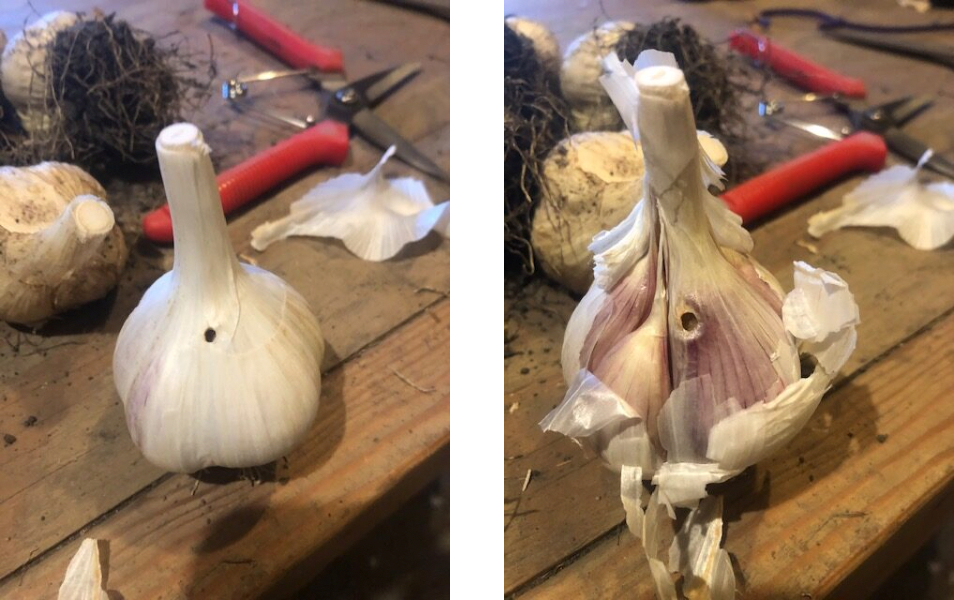Garlic Disease & Pest Information
Learn about threats to your garlic
These are diseases, pests and conditions that are present in Minnesota garlic, or have been confirmed in other parts of the country and have the potential to come here in the future.

We are working hard to keep this devastating disease from becoming widespread in Minnesota. In cooperations with the Plant Disease Clinic, the MN Garlic Festival has implemented a test that all growers who sell garlic at the festival are required to complete. This same test is available to all growers and gardeners in MN.
Aster Yellows Phytoplasma (AYP) severely affected garlic in the Upper Midwest in 2012, with aftereffects in 2013 and beyond. AYP was also present to a lesser degree in harvested garlic across the state in 2017 and 2021.
Fusarium (PDF) is a fungus that is present in most soils and is most often a secondary infection in garlic after physical or insect damage.
Anthracnose of Garlic Scapes (PDF): there were several reported incidents of what appears to be anthracnose, sometimes called "twister", in garlic scapes in the upper midwest in 2020. It was confirmed by testing in WI. It generally only affects the scapes, but can render them unsellable.
White rot is a worldwide problem in allium production, and has resurfaced in the New York garlic industry after a long period of eradication. We need to be vigilant to prevent it spreading to the upper midwest.
Purple Blotch is more common in onions, but can affect garlic. Has been confirmed in Iowa and suspected in southeast Minnesota.
Effects of Growing Techniques on Yield, Grade, and Fusarium Infestation Levels (PDF): a Cornell Vegetable Program study on the effects of different common and novel techniques used to cultivate garlic, tracking both the levels of Fusarium and the quality of the garlic in each approach.
Garlic Mites (PDF): also known as Dry Bulb Mite, it appears to be increasing in Minnesota.
Blotch Mold/Embellisia is a mold that usually occurs during storage, damage at first is usually superficial, but it can advance to damage cloves.
Garlic Rust is uncommon in Minnesota and rarely effects production. Rotation away from previous plantings and other alliums appears to be the best preventative.
Waxy Breakdown: even though it sounds like a great name for a bluegrass band, waxy breakdown showed up in at least one garlic crop in MN and one in MI in 2020. It is a "physiological condition, not one due to infection by microorganisms." Cloves can shrink and turn yellow inside the bulb - they get waxy - sometimes becoming hard, and other times becoming pasty or gelatinous. There is no proven cause, though it's possible that high temperatures during the growing season or while curing can cause it.
Wireworms affect a wide range of vegetables, including garlic.
Learn more: University of Minnesota Publication
Wireworm damage in garlic:

Photos courtesy of Living Song Farm, Howard Lake
Allium Leaf Miner is something to watch out for: leafminers have been found in the eastern US, though not reported here yet.
A video from a grower in Vermont who uses row covers to protect against Allium Leaf Miner.
